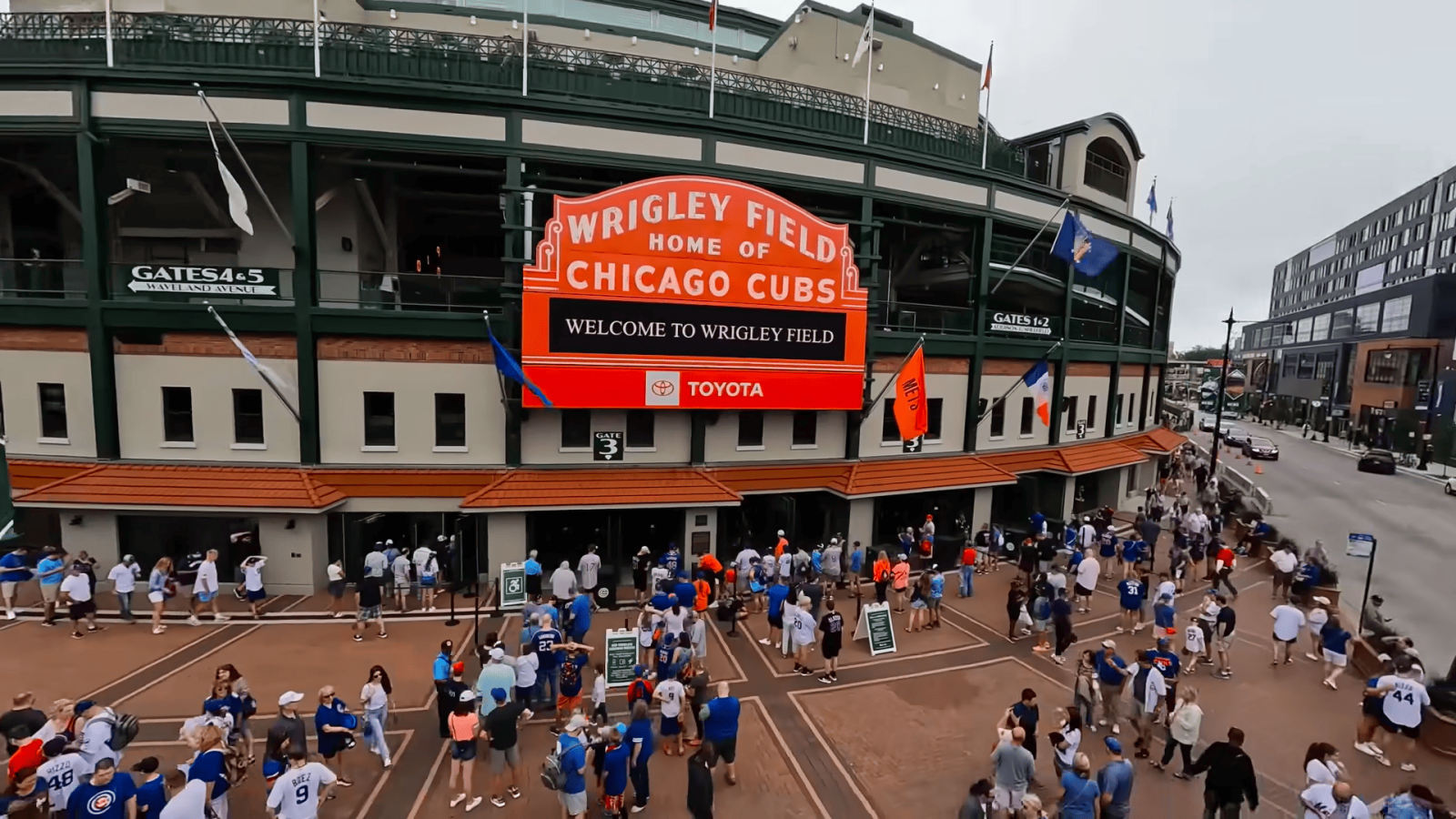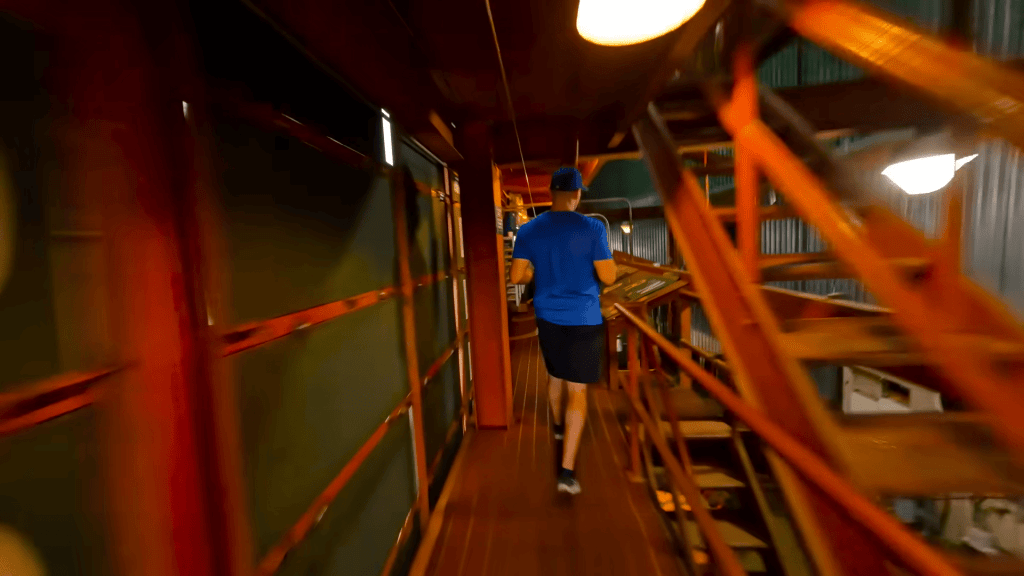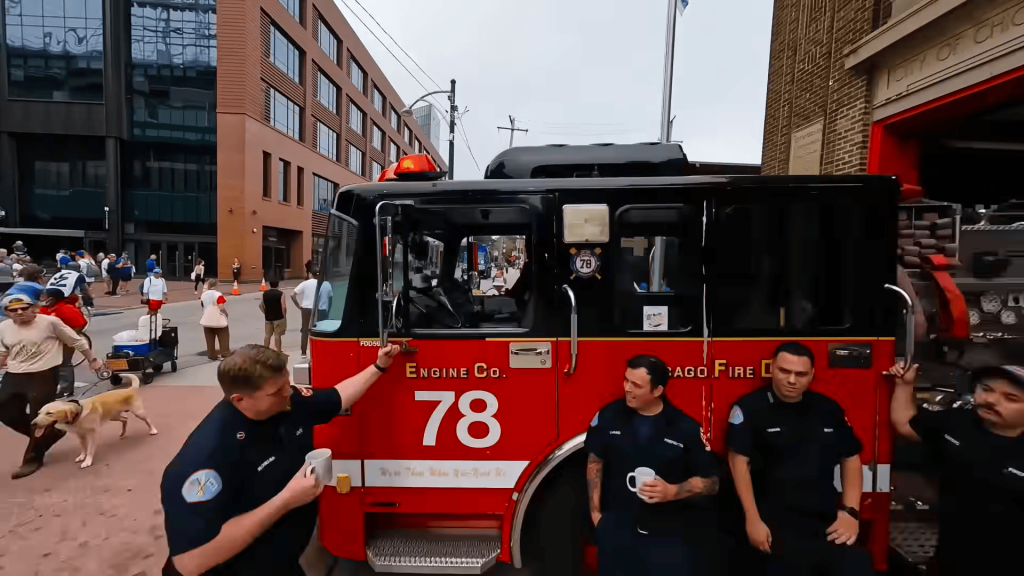
If you’re a baseball fan, or just appreciate exceptional sports content in general, chances are you’ve seen or shared the viral Wrigley Field drone video that the Chicago Cubs put out last weekend. Now, catch the breakdown of all the hard work that has gone into making that video appear as thrilling as it does.
The concept
The Chicago Cubs shared the drone flythrough of Wrigley Field and its surrounding neighborhood on the team’s social media channels with a simple caption:
To the best fans in baseball, you make Wrigley Field the Friendly Confines.
Released ahead of the final home series of the season, the four-minute FPV drone footage is essentially the Chicago Cubs’ way of honoring their fans.
Read: New DJI drone Mavic 3 Classic shows up in FCC filings
The drone captures a number of aspects of the game-day experience at the iconic Wrigley Field, right from providing a bird’s-eye-view of the L train (which is the cheapest and quickest way to get to the stadium) to gliding through the neighborhood and into Murphy’s Bleachers pub before entering the ballpark. Once inside, the drone makes its way through the lights on the first base side, takes a spin inside the stadium’s scoreboard, and lets you peek inside the Cubs’ Clubhouse, wrapping up by trailing Cubs right fielder Seiya Suzuki out of the dugout.

Production studio and crew
The video was shot by Minneapolis-based production studio Sky Candy Studios using a crew of only three people. Company founder Michael Welsh tells Chicago-based radio station WBEZ that almost all of the content was shot in late July with drones, with the exception of the part where Suzuki goes out onto the field. Overall, it took four days to capture the footage, with two days being dedicated to scene scouting alone.
Read: Viral FPV drone video of Dallas Cowboys’ HQ took 15 attempts to film
Drone and camera equipment
For some parts, the crew used a Rotor Riot Cinewhoop with a GoPro Hero 10 action camera attached to it.
Other sequences were shot using a Lumenier QAV-PRO 2.5-inch Microwhoop and a stripped-down GoPro, ensuring that the total weight of the drone remained under 250 grams.
In the last few seconds, the video transitions to a handheld GoPro because the FAA has Temporary Flight Restrictions (TFRs) in place on game days. And filming that, Welsh says, was an extremely daunting experience for him. Here’s Welsh:
You only get one shot at that. I was running up the stairs and I was so worried I was going to slip and fall and ruin the shot. [But] I thought it was really cool to end the video running out into the field right before opening pitch, we’ve never had that opportunity before to end it like that and I think the fact that we got access to run out with a player — that was my favorite part.
Read: ‘We heard you guys like drone videos’ – Miami Dolphins flex FPV drone skills
The magic of post-production
A total of five different videos get spliced up and stitched together seamlessly in post-production. Each of these five videos took about five takes with a lot of prep and talking with the people who appear in the shots.
Also, not all of these takes were perfect. The crew even crashed a drone while attempting to fly the drone through the open windows of a firetruck for the first time.

The spectacular audio mixing of different sound elements such as the train, announcers, and fans cheering is also worth mentioning because it elevates the video to a whole new level. This was also done in post-production using archival audio clips provided by the Cubs since the buzzing of the drone is loud enough as is and couldn’t have captured all the sounds while filming the video.
The final product: A viral FPV drone video
The final product is Wrigley Field and its neighborhood like you’ve never seen it before. The viral drone video has been viewed more than 7 million times on Twitter alone, with hundreds of thousands of views coming in from YouTube, Facebook, Instagram, and TikTok as well.
FPV drone flying for beginners
In the meantime, if you’re looking to get started with FPV drones, we recommend the new DJI Avata which is the safest and arguably the most powerful Cinewhoop-style FPV drone to fly today, straight out of the box. This drone will not just open up a whole new world of cinematic videography for you, but it will also show you just how incredibly thrilling an immersive flight experience can be.
Read: 10 things to know about DJI Avata, the ultimate FPV drone for beginners
FTC: We use income earning auto affiliate links. More.





Comments